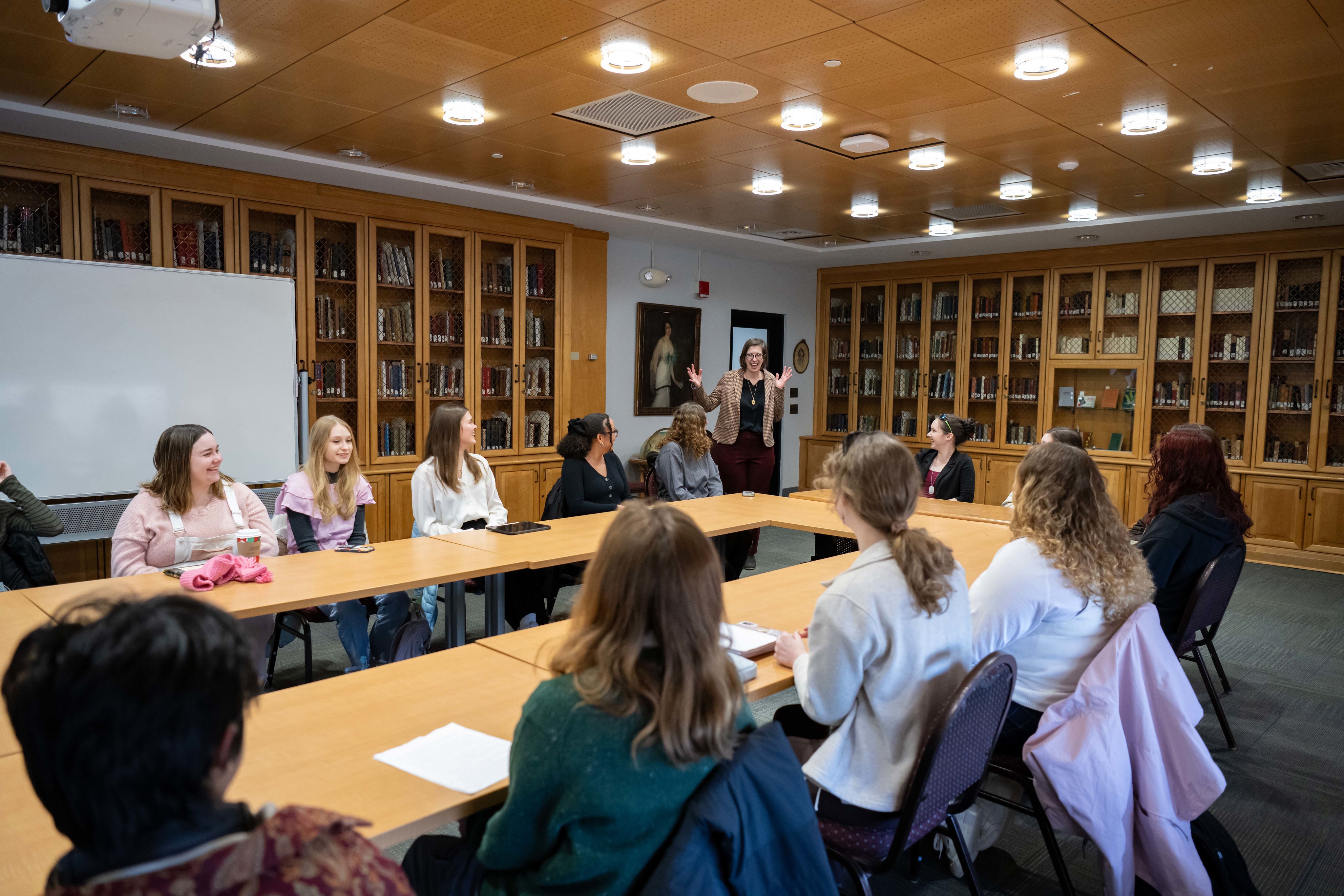Sophie Kerr Reimagined
Lit course introduces the author to a new generation.
By MacKenzie Brady ‘21

How much do you know about author Sophie Kerr? Her name, probably. And that she was a writer. Maybe that she was from the Eastern Shore.
You most likely only heard of her because of the Sophie Kerr Prize named in her honor—the largest undergraduate literary prize in the country—awarded each year to a graduating Washington senior with literary potential. The winner is announced at Commencement when the recipient is also handed the check.
Yet Kerr was both famous and prolific. From 1918 to 1931, she published over 300 short stories, most of them in magazines, as well as 23 novels and other writings. While she was a very popular writer in her own time, because her works were not embraced by the literary elite, her work has not received the recognition it deserves.
“There was this difference between high culture, which is experimental and literary, versus mass culture, which was published in magazines and feminized and seen as lesser,” said Associate Professor of English Elizabeth O’Connor. “Kerr was almost at the top of the sales in the teens and twenties. And she has gotten very little attention.”
In fall 2024, for the first time, 59 years after Kerr’s death, Washington College offered a course on her work, taught by O’Connor.
The course, Feminist Modernism(s): Editing Sophie Kerr, analyzed six of Kerr’s short stories over the semester and contextualized her writing within the literary landscape of her era—literary modernism, a period spanning from the late 1800s through 1939. Contemporary writers featured included Ernest Hemingway, Virginia Woolf, Edith Wharton, Dorothy Parker, and others.
The focus of modernist literature was experimenting with style and subject matter and expanding the concept of realism. New textual and narrative techniques, like the stream of consciousness, changing perspectives, and tunneling—a technique that reveals a character’s past and inner thoughts through their memories, connecting past events with present moments—were some of the modernists’ innovations that trickled into more mainstream writing genres.
Kerr’s work was very much of its time, and as well as using some of the modernists’ literary innovations, she addressed key societal themes, such as abuse, domestic violence, and the new woman—a feminist ideal of educated, independent, career women. Kerr would often approach these core topics in multiple stories and from different perspectives.
“Tracing these patterns over time, you can see her evolutions and how she was trying to negotiate what I think was a real interest in depicting strong female characters that were able to go against the conventions of the time and negotiating how to do that in a way that was still going to be socially acceptable and not get much pushback from others and not get too much negative reaction,” O’Connor said.
According to O’Connor, Kerr’s thematic and formal experimentations varied widely across her writing.
O’Connor—a modernist scholar herself—called the course Feminist Modernism(s): Editing Sophie Kerr because the study of modernism shows there were “different types of modernisms and a lot of experimentation happening, even in mass market publications such as the ones Kerr was publishing in,” O’Connor said.
“I think that Sophie Kerr is a really important writer that more people should be aware of,” O’Connor said. “She shows how a lot of these changing ideas about the new woman, about what it means to be a woman, were changing dramatically during this period and being worked out in ways that we don’t always get if we’re just relying on Virginia Woolf, Hemingway, and Jean Rhys. I love those writers, but Sophie Kerr was writing about things that definitely were more relevant to a lot more middle-class readers, and that’s how a lot of those ideas were trickling down into the mainstream.”
Students read Kerr’s work in the form in which it was originally published, such as in magazine spreads with accompanying illustrations and ads for domestic products and clothing.
“A lot of times, students view texts almost in a vacuum,” O’Connor said. “The majority of [Kerr’s] publications were serialized in magazines, and people were seeing them with all the ads and stuff. We’ve read in the original forms to try to get the students to think about how things were being published, where they’re published, and how the illustrations connected to it affect the way readers were viewing these texts.”
For their final project, each student wrote an introduction for their own Sophie Kerr story, contextualizing it with a second Kerr story and another by one of her contemporaries. These introductions were presented during the course’s final class, held in the Sophie Kerr Room in Clifton M. Miller Memorial Library.
While the course has ended, O’Connor’s interest in Kerr has not. She is presenting some of her findings and observations from the course at a conference this semester.
“One of the things I discovered but have not done much with is that a lot of her short stories were also adapted into silent films and early talkie films,” O’Connor said.
O’Connor hopes to use her next sabbatical to research Kerr’s work and its reception at the time. She hopes to write an article about the author and to get some of her short stories back into print.

